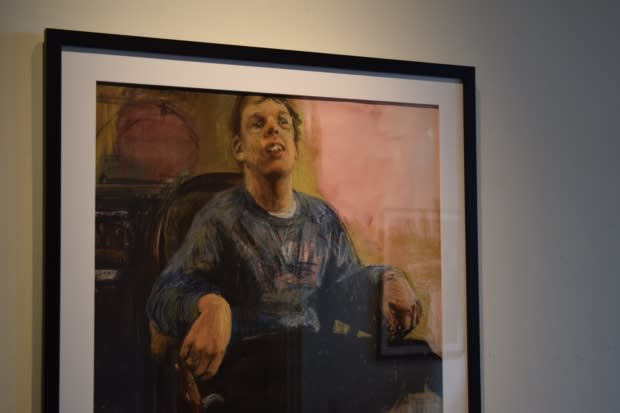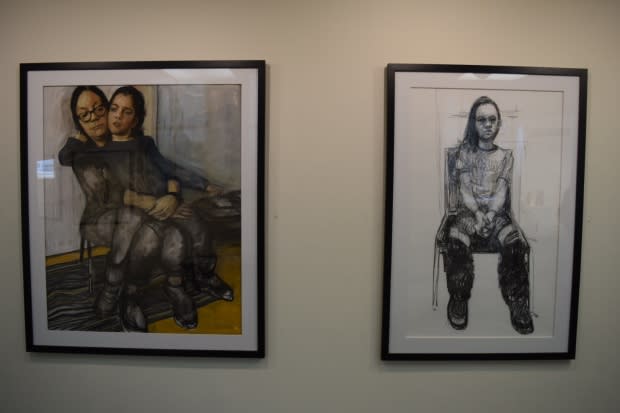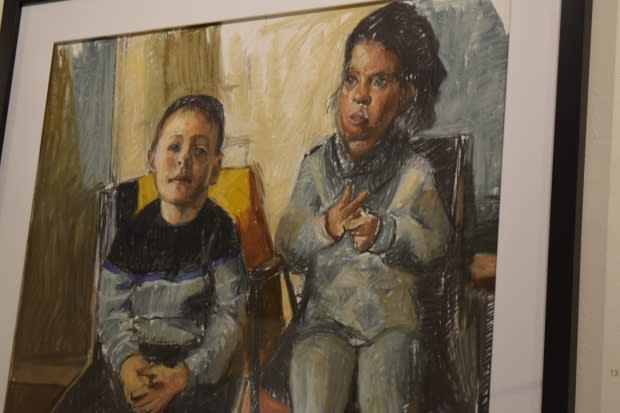Seeing the patients: Art shines light on New Brunswick children with epilepsy
In two rooms at the Saint John Arts Centre, portraits of children and young adults from New Brunswick hang motionlessly on the wall.
While their ages, shapes and expressions vary, one thing that unites the subjects is a shared diagnosis. They all have epilepsy.
We weren't looking to make it all nice for everyone. … We wanted to depict the reality for these families and it isn't all nice. - Wendy Stewart, pediatrician
"I'd be working with the people I was working with, families of the patients, and there would be a lot of discussion, there would be a lot of chat," Glasgow artist Mark Gilbert said by phone.
"There would be times we were playing music and the participant would be dancing.
"Then, in an instant, that could all change as the person I was drawing would have a seizure."
The shift in tone was immediate, he said, as the families and caretakers would do their best to console the youth.
Showing the struggle

The intent of Seeing the Patients was to explore the lived experience of children with epilepsy and their caregivers.
The subjects, age five to 25, were all from Dr. Wendy Stewart's pediatric office, which is primarily based in Saint John.

"For me, it was a way of bringing to the floor the struggles that families have and the challenges this diagnosis brings," Stewart said. "The stigma — all those things."
On top of the paintings, interviews were conducted and will later be published in a qualitative research paper.
Gilbert views his artwork as going beyond the physical, despite being part of science-based research.

He tried to encapsulate some aspects he encountered among the young people and their caretakers, including the insecurities of the patients, the unpredictability of their seizures, the compassion of the caretakers, the tiredness following an episode, their resilience and whatever came after.
"There could be more laughing," he said. "More dancing. More chat."
'It isn't all nice'
While watching the seizures and return to normalcy had a profound effect on Gilbert, but he acknowledged bother were commonplace for those he painted.
At first, the artist wasn't sure if it was appropriate to paint or draw when someone had a seizure.

But then, once given permission, he felt a duty to tell that side of the story, to show the complexities of having a neurological disorder.
"People who engage with the drawings will gain a better understanding or semblance of what it's like," he said.
The doctor, who wasn't present during the art's creation, shares the sentiment.

"We weren't looking to make it all nice for everyone," said Stewart. "That wasn't the goal. We wanted to depict the reality for these families and it isn't all nice.
"And yet, in the midst of that, there are rewards."

More than anything, she hopes the art humanizes the children.
While less than one per cent of the Canadian population has epilepsy, 10 per cent will suffer from a seizure at least once in their lives.
What Gilbert hopes people glean from the series, what he'd tell onlookers if he stood next to them is that what they're seeing isn't as foreign as they might believe.
"I don't know if it's something we're all prepared for, but we're all going to be patients and caregivers one day," he said.

 Yahoo Sports
Yahoo Sports 